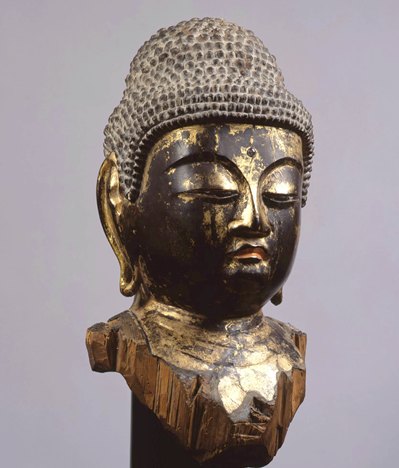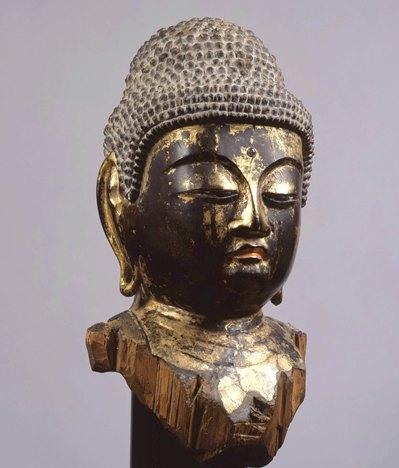This weekend LACMA added eight new works to its collection through its annual Collectors Committee events. All week on Unframed our curators will be highlighting the objects just acquired.

Head of a Buddha, Japan, 1000–1050 (Heian Period), gift of the 2011 Collectors Committee
This large head was originally part of an eight-foot- tall seated Buddha, probably that of Amida, ruler of the Western Paradise of Ultimate Bliss. Made of cypress wood, it was lacquered in black and covered with gold leaf, traces of which remain. It bears the requisite characteristics of a Buddha: the crystal Urna in the forehead emitting infinite light, the 656 tight curls of hair, and the all-hearing elongated ears. The head of a Buddhist statue is by far its most important element: the power, meaning, and compassion of the Buddha is expressed through its face. The construction of this head is of an ancient type primarily seen in sculpture of the eleventh century, called wari-hagi-zukuri (splitting, carving out, and rejoining). In this technique the head is first carved from a single large block of wood, then split into halves along a vertical line behind the ears, creating a front half and a back half. Both of these halves are then hollowed out using a chisel, and the two halves rejoined. This technique produces a sculpture that is lighter and far less likely to crack due to dryness.
This sculpture has been definitively dated to 1000–1050 AD. There exist three other Heian period (794-1185) sculptures comparable to Head of a Buddha in age and size; all are in Japanese Buddhist temples and all are registered National Treasures—but are inferior in condition and quality to this one.
Next month, Head of a Buddha will join three other eleventh- and twelfth-century (Heian-period) wood sculptures on display, but it will be—by a significant margin—the oldest and finest of them all. Together, the four works will give tremendous depth, quality, and breadth to our display of Heian-period sculptures of the eleventh and twelfth centuries.
Robert T. Singer, Curator and Department Head, Japanese Art



